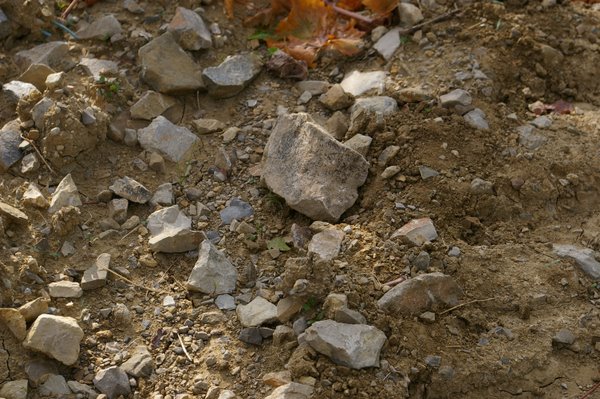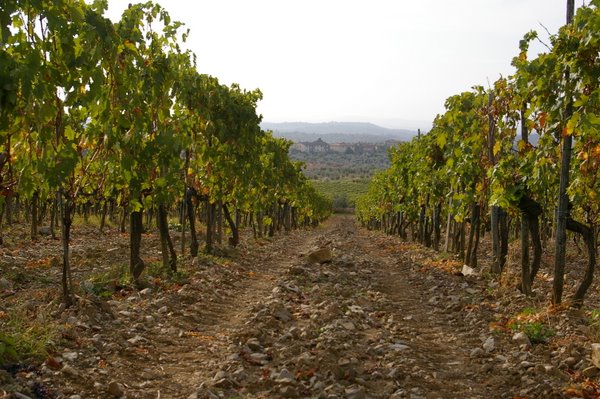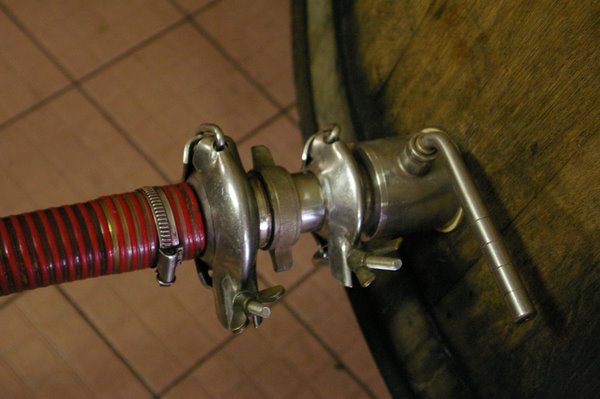|
Visiting
Chianti Classico
Part 8: Podere il
Palazzino
Website:
www.podereilpalazzino.it

Alessandro
Sderci (above) is a banker by trade, but it’s not
necessarily his first love. ‘My passion is to produce wine,’ he
declares. Podere il Palazzino is his family estate, with 20 hectares
of vines, and he’s now in his 35th harvest. [Incidentally, the
bank he works for is the oldest bank in the world: Monte di Pasci in
Siena.] Sderci has a talent for wine. These are some of the best,
most elegant Chiantis that I’ve encountered.

‘Our
idea of producing Chianti Classico hasn’t always been along the
same lines as other producers,’ he says. ‘In the 1970s the style
was for lighter wines, so we had problems.’ As a result, his
Grosso Senesi single-vineyard wine, which is 100% Sangiovese, and
thus darker than some of the wines which had other grapes blended
in, was initially labelled as VdT. (This was before the IGT category
which is widely used for premium wines in the region was invented.)
Now the rules have changed back and it is legal to make Chianti
Classico with 100% Sangiovese.
Alessandro
has renamed this wine Chianti Classico, but admits that from an
economic point of view this was a disaster. ‘It’s more difficult
to sell an expensive wine as Chianti Classico than it is as an IGT,’
he says. ‘Many producers who could make Chianti Classico still
call their 100% Sangiovese wines IGT.’

Palazzino
is located in Monti, a small village that’s part of the Gaiole
subregion of Chianti Classico. It’s quite high here – one of the
highest parts of the region. In the vineyard, Alessandro has stopped
using herbicides and just uses mechanical means to keep the vineyard
clear of weeds.

Of
the 2008 vintage, he says that September really helped. It’s an
important month in this part of the world. For example, in 2005, it
would have been a good vintage but a poor September made it a
difficult one. 2008 was looking like a disaster, but then cool
nights and sunny days meant that the last stages of maturation could
happen with no rot.

He
has started using just organic products in the vineyard. ‘I was
afraid to do this change alone,’ he reveals. ‘I was worried we
could make a lot of mistakes, so I decided to hire a consultant to
help me.’ The consultant, a Mr Mazzilli, is an expert in organics.
‘We are only doing it without certification, but I’m sure that
in the future I’ll obtain certification.’ A group of like minded
producers in the locality are all switching to organics.

Alessandro
also used to have a winemaking consultant, called Luciano Bandini.
‘I didn’t follow what he did all that much, but I told him that
I did,’ he jokes. He
sees consultants like this as similar to the placebo given by
doctors: just having a consultant helps psychologically.

Consultants
are very important in Tuscany. Alessandro thinks that the reason is
that unlike the situation in Piedmont (which had a tradition of
small producers), Chianti didn’t have a widespread knowledge of
making wine, which in the past was usually in the hands of big
fattoria. ‘So the workers didn’t know how to make wine. People
who have bought small podere in Chianti are often newcomers from
other kinds of work, so they needed help from a consultant. In
recent years people have hired famous consultants because this helps
them sell their wine.’ He adds that, ‘Some of my colleagues put
the name and photo of the consultant in their brochures.’
The
range consists of three single vineyard wines (Grosso Senese, La
Pieve, Argenina), and three IGTs (Casina Girasole, Bertinga [a blend
of Cabernet and Petit Verdot] and Stagi [a varietal Colorino]).

Podere
il Palazzino La Casina Girasole 2006 IGT
Beautifully
aromatic: very fresh, sweet pure cherry, plum and strawberry fruit
with a fresh spicy edge. Quite complex. The palate is expressive
with lovely subtle, elegant earthy notes and some minerality under
the supple, slightly bitter plum and cherry fruit. Expressive and
lovely. 91/100
Podere
il Palazzino Argenina 2006
Slightly
tight, shy nose with mineralic dark cherry fruit. The palate has
beautiful concentration with rich texture to the pure, mineralic
fruit and lively acidity framing the pure fruit very well. Really
beautiful with a really lively core to it. 93/100
Podere
il Palazzino La Pieve 2005
Beautifully
aromatic nose with dark cherries, spices, subtle earthy notes. It
has a lushness, but also purity and elegance. The palate is
beautifully elegant with spicy minerality and subtle earthiness
under the fruit. Supple and quite beautiful. 94/100
Podere
il Palazzino Grosso Sanese 2005
Sweet,
warm, spicy, earthy edge to the nose which is rich yet quite
elegant. The palate shows lovely complex sweet earthy spicy fruit
with a lovely natural sort of character. Really interesting stuff
with hints of tea and tobacco. Good concentration with seamless
structure. Perhaps just lacks a little definition. 93/100
Podere
il Palazzino Bertinga 2005
Petit
Verdot and Cabernet Sauvignon. Forward, intense spicy blackcurrant
fruit with lovely purity. Quite sweet but with spiciness keeping
things savoury. The palate is dense with lovely earthy minerality
under the intense fruit. Finishes savoury and earthy: lovely density
here. 92/100
Podere
il Palazzino Stagi 2004
Made
from Colorino, a teinturier variety. Dense, structured and spicy
with a lovely minerally edge to the red fruits. Lovely firm,
mineralic tannic structure with nice savouriness. An interesting
wine that I find delicious and complex. 92/100
Podere
il Palazzino Grosso Sanese 1991
This
was an experiment with 100% new barriques. Open evolved herby nose
with some figs, tobacco and leather notes. Sweet and warm. The
palate has a leathery, citrussy edge to it. Firm structure and
bright acidity, finishing leathery. Drink up. 89/100
CHIANTI
SERIES
 Part
1: Introduction Part
1: Introduction
 Part
2: Fontodi Part
2: Fontodi
 Part
3: Castello di Querceto Part
3: Castello di Querceto
 Part
4: Castello della Paneretta Part
4: Castello della Paneretta
 Part
5: Bibbiano Part
5: Bibbiano
 Part
6: Fattoria di Felsina Part
6: Fattoria di Felsina
 Part
7: Castell'in Villa Part
7: Castell'in Villa
 Part
8: Palazzino Part
8: Palazzino
 Part
9: Barone Ricasoli Part
9: Barone Ricasoli
 Part
10: Colle Lungo Part
10: Colle Lungo
 Part
11: Vicchiomaggio Part
11: Vicchiomaggio
Wines
tasted 10/08
Find these wines with wine-searcher.com
Back
to top
|